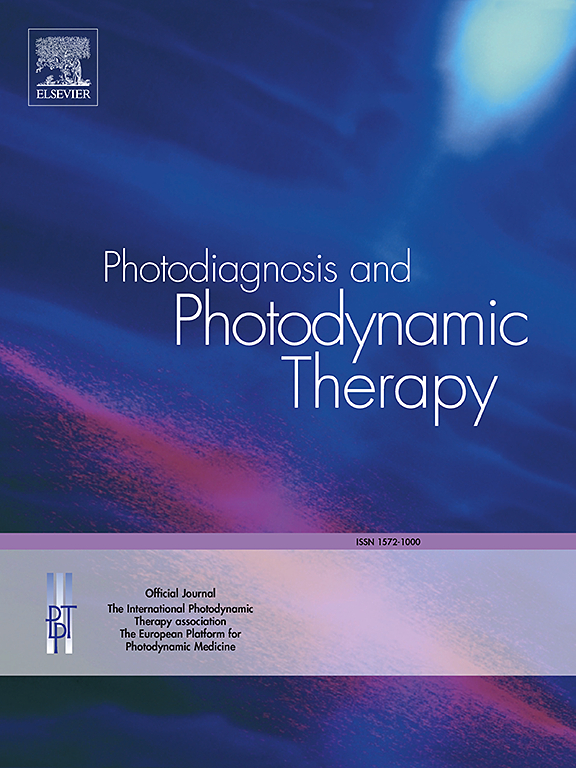Efficacy of photodynamic diagnosis for non-muscle invasive bladder cancer: Exploratory subject-based analysis in a prospective, single-arm, multicenter phase III trial
IF 3.1
3区 医学
Q2 ONCOLOGY
引用次数: 0
Abstract
Background
This analysis utilized a subject-based analysis of data from the prospective single-arm phase III trial (jRCT2061210055) to evaluate the efficacy of photodynamic diagnosis (PDD) when 5-aminolevulinic acid hydrochloride (5-ALA) was administered 4–8 h before transurethral resection of bladder tumors (TURBT).
Methods
This study evaluated 144 patients suspected of having non-muscle invasive bladder cancer (NMIBC), including 127 with NMIBC (38 patients had normal-to-flat-appearing cancer) and 17 without cancer. The diagnostic accuracy and clinical utility of blue light (BL) during TURBT were assessed for each patient and compared with those of white light (WL).
Results
Subject-based analysis revealed that WL alone missed tumor lesions in 33.1 % of patients, whereas BL alone missed 3.1 % in a biopsy-based analysis (P < 0.001). WL alone failed to diagnose NMIBC in 4.7 % of patients, while BL missed 1.6 %. Adding BL to WL led to an upgrade of NMIBC risk classification in 12 of 127 patients (9.4 %), including 5 upgraded to high-risk and 4 to highest-risk categories.
Conclusion
This study is the first to demonstrate that PDD's efficacy is maintained up to 8 h after oral 5-ALA administration and indicates that PDD improves the detection rate of bladder cancer, potentially optimizing risk stratification and offering optimal additional treatment.
光动力诊断治疗非肌层浸润性膀胱癌的疗效:一项前瞻性、单臂、多中心 III 期试验中基于受试者的探索性分析。
背景:本分析利用前瞻性单臂III期试验(jRCT2061210055)的数据进行基于受试者的分析,评估5-氨基乙酰丙酸盐化(5-ALA)在经尿道膀胱肿瘤切除术(TURBT)前4-8小时给予光动力学诊断(PDD)的效果。方法:本研究评估了144例疑似非肌性浸润性膀胱癌(NMIBC)患者,其中127例为NMIBC患者(38例为正常至扁平癌),17例无癌患者。评估每例患者TURBT期间蓝光(BL)的诊断准确性和临床应用,并与白光(WL)进行比较。结果:基于受试者的分析显示,单独WL在33.1%的患者中漏诊,而单独BL在基于活检的分析中漏诊3.1%(结论:本研究首次证明口服5-ALA后PDD的疗效可维持至8小时,并表明PDD提高了膀胱癌的检出率,可能优化风险分层并提供最佳的附加治疗。
本文章由计算机程序翻译,如有差异,请以英文原文为准。
求助全文
约1分钟内获得全文
求助全文
来源期刊

Photodiagnosis and Photodynamic Therapy
ONCOLOGY-
CiteScore
5.80
自引率
24.20%
发文量
509
审稿时长
50 days
期刊介绍:
Photodiagnosis and Photodynamic Therapy is an international journal for the dissemination of scientific knowledge and clinical developments of Photodiagnosis and Photodynamic Therapy in all medical specialties. The journal publishes original articles, review articles, case presentations, "how-to-do-it" articles, Letters to the Editor, short communications and relevant images with short descriptions. All submitted material is subject to a strict peer-review process.
 求助内容:
求助内容: 应助结果提醒方式:
应助结果提醒方式:


